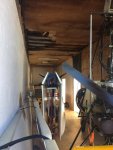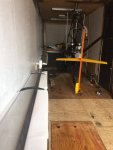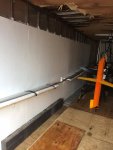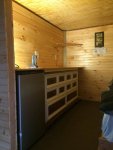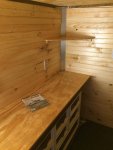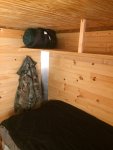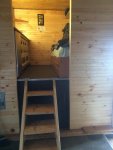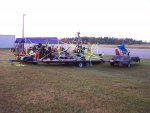PAgyropilot
Junior Member
Hello Everyone,
Sorry if this isn't the correct forum for "trailers", but I didn't see a trailer forum. (Admin, please move to the correct forum if there is another.)
I've purchased an RAF 2000, and would like to trailer it without taking the rotors off. I have an enclosed trailer which is 33 feet long (interior) and 7 1/2 feet wide.
The roof needs to be raised, and I'm planning on taking it to the manufacturer to have them raise the roof and provide the proper clearance.
I haven't taken physical possession of the RAF yet, so I can't take measurements. I'd appreciate it if someone would tell me the height of the mast. I want to
be sure the door is at least 6 inches higher than the mast.
I can already hear people thinking, "The rotors are going to be damaged if he leaves them on while trucking down the road." I intend to build cushioned supports,
which will hold the rotors up, in a non-flexed position, and keep them from bouncing/flexing up and down. That way when I get to my destination, I just remove the
supports, remove the fuselage tie-downs, roll it out and go.
If anyone else has a set-up similar to what I'm planning, please share your thoughts and experiences. I'm eager to learn, and hate re-inventing the wheel.
Thanks.
Sorry if this isn't the correct forum for "trailers", but I didn't see a trailer forum. (Admin, please move to the correct forum if there is another.)
I've purchased an RAF 2000, and would like to trailer it without taking the rotors off. I have an enclosed trailer which is 33 feet long (interior) and 7 1/2 feet wide.
The roof needs to be raised, and I'm planning on taking it to the manufacturer to have them raise the roof and provide the proper clearance.
I haven't taken physical possession of the RAF yet, so I can't take measurements. I'd appreciate it if someone would tell me the height of the mast. I want to
be sure the door is at least 6 inches higher than the mast.
I can already hear people thinking, "The rotors are going to be damaged if he leaves them on while trucking down the road." I intend to build cushioned supports,
which will hold the rotors up, in a non-flexed position, and keep them from bouncing/flexing up and down. That way when I get to my destination, I just remove the
supports, remove the fuselage tie-downs, roll it out and go.
If anyone else has a set-up similar to what I'm planning, please share your thoughts and experiences. I'm eager to learn, and hate re-inventing the wheel.
Thanks.

